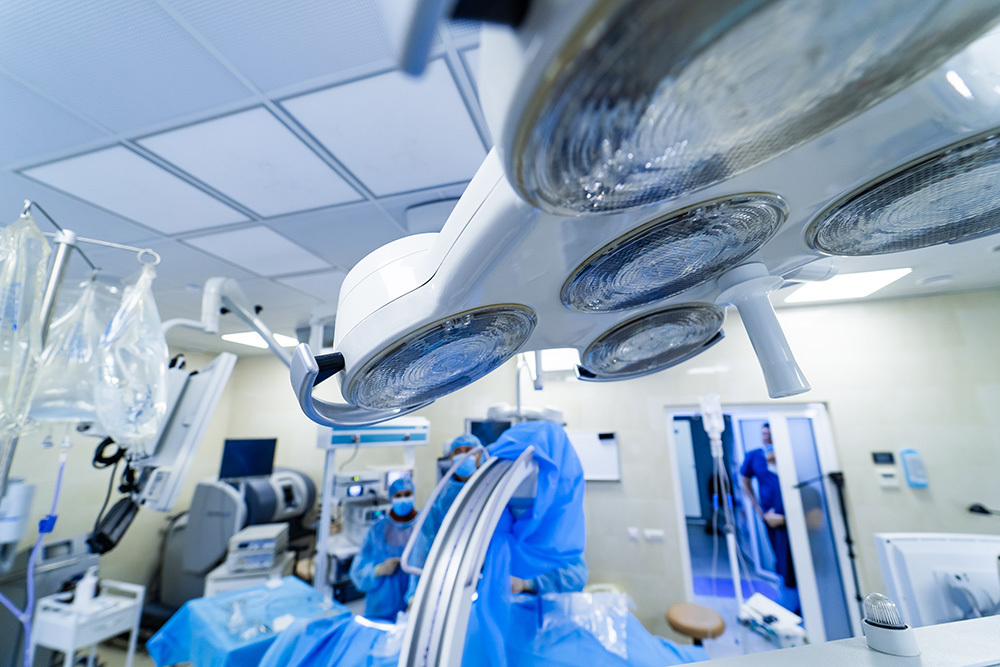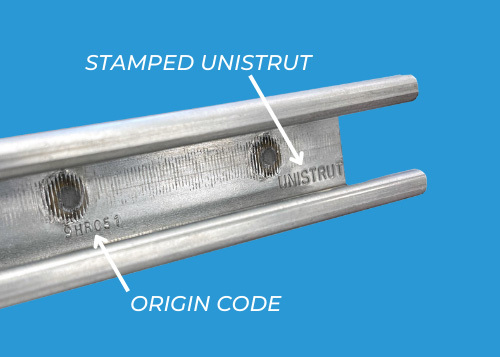Why Use Unistrut for Medical Equipment Support Systems?
March 4, 2025
At Unistrut Midwest, we advocate for including our expertise from the very beginning of a medical equipment support project. It's not just that our team loves to brainstorm ideas, troubleshoot issues, and collaborate to design a perfect solution; we know that by including an experienced team from the start, our clients have a much higher likelihood of smoothly completing a successful project, often saving time and money.
However, it's not uncommon to hear from a new client when their medical support project is already well underway. They will call and request a support system to be completed that same week because their medical equipment provider arrived on site to find an insufficient system in place. We've seen clients who relied on an electrician or carpenter to install a support system, often consisting of threaded rod, which cannot adequately support the lighting system, booms, x-ray equipment, or other machinery. Instead of involving an expert team from the beginning, these clients find themselves in the final weeks of construction needing an entirely new support system. While we're happy to step in and help, working with our team from the beginning would have prevented such headaches.

In a recent example, we worked with a client who had their worst nightmare come true: their cath lab supports failed and the machinery came crashing down. Luckily the room was not in use so no one was injured, but the damage was catastrophic.
Equipment had been in this room for years with no issues, but when it was time to upgrade the equipment, the support system required some modifications. After making the necessary changes and installing the new equipment, one piece of channel was overstressed and failed, creating a domino effect of failures across the room, bringing the machinery down.
When our team came in to investigate the issue, we discovered two things:
-
The strut used in the construction was not authentic Unistrut
-
The hospital had hired a structural engineer to create the design and then used a general steel contractor for installation as opposed to specialists
Because of these two choices, the back-to-back strut welds failed and peeled apart, causing damage in this room and concern for other support systems in the hospital. This situation could have been avoided had this client used Unistrut materials and worked with an experienced team from the beginning.
Checking Unistrut for Authenticity
This client situation was a true material failure. When our team first heard from the client, we were told that a Unistrut failure had occurred. After our investigation, however, it was clear that the materials used were generic strut and not Unistrut. This is, unfortunately, not an isolated occurrence.
Over the years, the name Unistrut has evolved in the industry from a brand name to a shorthand for any strut. But Unistrut is manufactured to meet strict standards that ensure structural integrity, while other generic strut is not.
To ensure that the strut being used in your project is, in fact, Unistrut, look for two markings: the word "Unistrut" and a serial number. That serial number allows each and every piece of Unistrut product to be traced back to its factory of origin. If there is ever an issue with your Unistrut channel or part, being able to trace it back to its origin provides necessary information for repair or service. Whether a retailer willingly misrepresented another brand as Unistrut channel, or an honest mix-up occurred, you’ll be able to tell if the strut you’re using is genuine Unistrut, protecting the integrity of your project.

Why Use Unistrut and Unistrut Midwest for an expertly engineered solution
One of the benefits of Unistrut is that it is endlessly adaptable and adjustable, making it a no-brainer for support systems that may change in the future. In this client's case, those system adjustments were what precipitated the system failure. While that outcome could have been avoided by using genuine Unistrut material, working with an experienced modular support engineering team from the beginning would have also improved the outcome.
Our engineering team thinks beyond current requirements when designing a medical equipment support system. We never design a structure for only one piece of equipment, instead considering any changes or upgrades that may occur in the future. Technology changes rapidly these days and equipment can be changed out every five or six years in order to provide better patient care. Our team designs support systems that accommodate that reality.
With our decades of specialized experience and proven ability to help this client solve their problem, we have partnered with them as they move forward with additional changes to their medical equipment. Each time they make equipment upgrades in a room, our team assesses the current support system and makes necessary changes to ensure structural integrity for years to come.
Do you have a medical equipment support project on the horizon? Start on the right foot and contact our team today.

